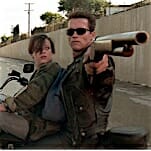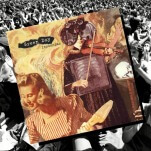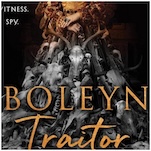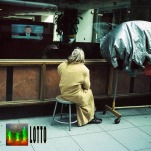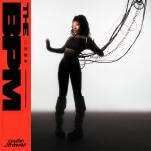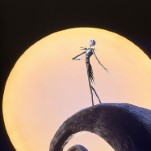Time Capsule: The Mountain Goats, Zopilote Machine
In the summer of 1994, while Beck was getting weird with "Loser" and Green Day was bringing (pop) punk to the shopping malls, John Darnielle was hunched over a Panasonic boombox, committing to tape what would become the Mountain Goats' first truly great album.

Zopilote Machine arrived with little fanfare, its 19 tracks of raw acoustic performances and narrative sophistication standing in stark defiance of contemporary production trends, from the glossy pop of Mariah Carey’s Music Box to even the Steve Albini-helmed rock sheen of In Utero. No bass, no drums, no electric guitar—just Darnielle’s fervent strumming and vehement vocals averaging a brief two minutes per track. But the album’s lean aesthetic wasn’t so much the consequence of limited means as it was a deliberate artistic choice: “I don’t like production that makes the fact that [the song] is a made thing disappear,” Darnielle said in a 1994 interview. Music doesn’t magically apparate into being; it is painstakingly, meticulously built or furiously, rapidly invented in a whirlwind of creativity, and that’s as much the point of these early songs as their actual narratives are. “Part of what I’m doing as the Mountain Goats,” he continued, “is the aesthetic approach.”
Although this approach to songwriting and, most of all, production has greatly shifted in the decades since Zopilote’s release (when asked in that same ‘94 interview if the Mountain Goats would “ever work in a regular studio,” Darnielle replied “In a word, no”—meanwhile, nearly all of the Mountain Goats’ releases since the band’s 2002 masterwork Tallahassee have been recorded in a studio), the zeal with which Darnielle approaches his craft certainly hasn’t. Later albums have seen transitions into more complicated song structures and complex instrumentation, but back in those early days, the song was just the medium through which the story was told—early Mountain Goats material was all zeal and narrative, with little emphasis on technical prowess, or even (as some detractors might insist) adequacy. But to weirdos whose favorite singers can’t sing (to be fair, Darnielle can sing, I am just legally obligated to reference David Berman whenever possible), whose favorite songs are unpolished and strange—weirdos like me—Zopilote Machine is catnip.
What’s remarkable about Zopilote Machine, especially when viewed through the lens of the three decades that followed it, is how the album manages to feel both entirely of its moment and somehow outside of time altogether. While contemporary releases were chasing the sonic possibilities of modern recording technology, Darnielle was deliberately working with tools that were already considered primitive. The Panasonic boombox wasn’t just a necessity; it was an aesthetic choice that aligned perfectly with the album’s themes of limitation, desperation and what beauty may emerge from constraint. The album’s title itself speaks to this duality. A zopilote—the Mexican-Spanish word for “vulture”—is a creature that transforms death into sustenance, that finds life in endings. It’s an apt metaphor for an album that repeatedly turns moments of crisis into opportunities for revelation. Throughout these 19 tracks, relationships collapse, mythological figures are born and die, and characters face moments of terrible clarity, all captured with the kind of fidelity that makes it sound like you’re eavesdropping on someone’s most private moments.
But when I say the songs on Zopilote Machine are rough around the edges, I don’t mean that they merely sound raw and scratchy. I mean that they literally feel as if they were written moments prior to Darnielle turning on his boombox and starting to record—which is, of course, because they were. According to Darnielle himself, the vast majority of songs from this era of the Mountain Goats were recorded only minutes after they were penned: “I probably did a few takes until I got what I liked, but you’re hearing something closer to the heat of composition than you can hear in any framework except improvised music. All of these, you’re hearing them within seconds of their composition,” he said.
Perhaps because of this process, Zopilote Machine feels as if it’s being propelled forward by a sort of manic urgency, the emotional stakes of each song driven higher from underneath the heft of the lyrics. The tape hiss becomes as much a character as the Bright Mountain Choir’s spectral harmonies. There’s a second story beneath the 19 individual narratives on Zopilote Machine, and it’s a story of creation: You can hear the artist at work, feel the discrepancy between the oddball, miserable characters making up the Mountain Goats’ universe and the brilliant, fervidly creative mind behind them. It forces the listener to develop this weird kind of secondary meta-awareness—as evocative and visceral as the songs are, and as easy as it is to get wholly enveloped in the fleshed-out emotional and physical worlds Darnielle lays out for us, that constant undertone of the tape buzz is a perpetual reminder that we are listening to art as it is being created, listening to the act of that creation itself.
But as effortless as this double effort might seem to us as listeners, it was anything but unintentional. As Darnielle told Consequence of Sound in 2022, “old Mountain Goats songs often seem to be chasing their own inspiration in the moment. Now, that involves some craft in actually doing and it doesn’t mean it’s being written on the fly. But the thing you’re trying to sell when you track it is that it sounds like it’s just spontaneously coming into being.” Zopilote adheres to this approach to song-writing, which Darnielle described as being, basically, about “get[ting] in and get[ting] out” to CoS, almost religiously—Darnielle gets in, writes the songs, records them and gets out. The songs themselves function similarly, all of them blunt and without frills, instrumental breaks, or even bridges.
Every song is much the same: some violent strumming, Darnielle’s tell-tale warble, and the construction of an entire world in around two minutes or less—because, even from within these austere parameters, Darnielle (who, notably, has become an acclaimed author in recent years, with three lauded novels since 2014 alone) manages to create far more compelling narratives than most artists could hope to come up with. Populated by mythological figures, vengeful mothers, real-world locales and the first appearance of the now-legendary Alpha Couple—whose doomed relationship would haunt the Mountain Goats’ discography for years to come—Zopilote Machine is a book of short stories (ranging in genre from Southern gothic to Aztec folktale) put to music, each more evocative than the last.
Take the opening track, “Alpha Incipiens,” which introduces you to Zopilote Machine by way of a breakneck burst of relentless strummed acoustics—a lo-fi crackle reminder of the song as a “made thing”—and Darnielle’s signature nasal tenor embodying the narrator entirely, voice dripping with barely-concealed anger. Every single line paints a devastating picture of not only the song’s tangible setting (how many songs name-drop low air pressure systems?), but its emotional landscape. The opening couplet alone is a masterclass in songwriting: “The morning comes to a stuttering halt / The cool breeze that blows is somebody’s fault.” These are the first brushstrokes in what would become the Mountain Goats’ most enduring narrative portrait—that of the Alpha Couple. Their narrative eventually culminates on Tallahassee, the 2002 tour de force that is one of approximately two things that makes me feel proud to be from my hometown of Tallahassee, Florida (the other being T Pain, specifically because I learned recently that the “T” in T Pain literally stands for Tallahassee, and I think that is just incredible)—but this is their beginning, their incipiens (which is, of course, Latin for “beginning”). This is the Alpha Couple in their embryonic form—the first stitches in a years-long tapestry made up of vignettes and minute details, weather patterns and morning glories climbing walls.
After a subdued, apocalyptic interlude in the form of “Azo Tle Nelli in Tlaltipac?,” the record’s longest song (it’s only three minutes), we get even more backstory about the Alpha couple. “You say again that nothing’s wrong,” Darnielle sings over a simple chord progression in “Alpha Sun Hat.” “I’d really like to play along.” But there are buzzards in the guava tree, and the music you hear is not music but the devil, and the Tallahassee sun is not a sun but a human heart. As the album’s final Alpha Couple track, “Alpha in Tauris,” puts it: “The moment’s sweet, but it’s all wrong.”
The Alpha Couple are far from the only persistent motif featured on Zopilote Machine; according to the unofficial Mountain Goats fan Bible, the Annotated Mountain Goats site, there are no less than six song series that make an appearance on the record. For instance, the album’s twin tracks “Orange Ball of Love” and “Orange Ball of Hate” —the latter of which doubles as an unofficial Alpha Couple song—crop up towards the middle of the record,. They’re an undeniable pair despite their vastly different narratives (even beyond the titles, both songs begin most verses with “when,” the word feeling a little like an informal anaphora).
“Love” is a delightfully odd love song that feels, more than anything else, like an excerpt of a novel that leaves you desperate to read the rest—if only so you can find out just what the hell the context is. “I know that you’re wearing a wire,” Darnielle hums, “but as the sun becomes a blazing orange ball of fire, / I lose interest in this and other such inconsequential questions.” I mean, hello? Is this a spy love story?! “I know you’ll be turning me in / But I also know your real name’s not Amy Lynn / I see you look at me and figure out what I know about you / Well I’m not telling / I’m not telling you anything”?! That being said, as much as I’d love to watch an entire film about this song (and I would), I don’t need anything more. Darnielle doesn’t need to tell me anything. It’s beautiful and bite-sized, a perfect morsel of narrative that manages to simultaneously satiate and leave you wanting more. But Darnielle has always had a gift for weaponizing brevity—where other songwriters might stretch a moment into a sprawling six verses, he distills it into its most volatile, visceral form.
-

-

-

-

-

-

-

-

-

-

-

-

-

-

-

-

-

-

-

-

-

-

-

-

-

-

-

-

-

-

-

-

-

-

-

-

-

-

-

-




